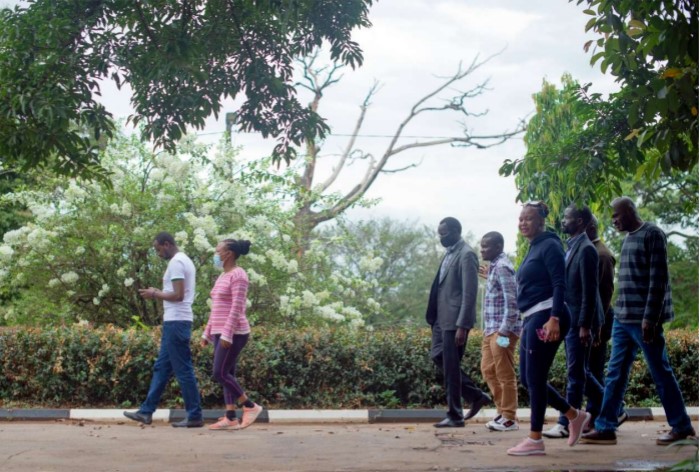Rebecca Crall - Areas of Focus Manager, Peacebuilding and Conflict Prevention
Peace doesn’t happen overnight. Peace is built in small, consistent ways over time. This may often seem counterintuitive, and even unproductive, in a culture where immediate gratification is our norm. While the peacebuilding process is often quiet, personal and complex, it is also one of the most important areas in which to dedicate our energy and time.
Many of the world’s pressing issues have a strong peacebuilding component—pandemics, environmental threats, and political conflicts all can be looked at through the peacebuilding lens. While these challenges are complex, Rotary is well positioned to make a difference. Just as we have committed ourselves to eradicating Polio, we can also commit ourselves to a vision of building sustainable peace.


2021 Peace Fellows walk through an area in downtown Kampala during a field trip in Kampala,
Uganda. 14 April 2021. Find the story in "Rotary" magazine, August 2021.
Starting can seem complicated but if we break it down, it is doable: think local and commit to engaging over the long term. The work of peacebuilding is dynamic, but once you start to see the patterns in your local community, finding a solution will become more obvious.
Whether you are interested in working on a club project or you are thinking about a larger global grant or even a Program of Scale, here are five important reminders about peacebuilding that will set the foundation for strong, sustainable outcomes.
1. Be comfortable with the uncomfortable. Issues of peace and conflict are hard. They involve the messy business
of being human. When talking about issues of grievance or inequality, there might be times where conversations get uncomfortable. That is ok. Stay open.
2. All peace is local. Issues of peace and conflict are almost always local and unique to the community or region where you are working. Work with local, trusted organizations to increase the likelihood of success in whatever you are trying to do. Consulting Rotary’s Community Needs Assessment Guide is a good place to start.
3. Think about the system. Creating sustainable peace means viewing the causes and conditions of peace and violence as an interwoven system. The more you can think about the different components of the system, the closer you will be to finding a lasting solution. This video lays out four mindset shifts that utilize systems thinking:
a. Seek health, not mission accomplished.
b. See patterns – not just problems.
c. Unlock change – do not impose it.
d. Plan to adapt if necessary. If something is not working, don’t stay the course.
4. It’s a cloud, not a clock. Some problems are clock problems and some problems are cloud problems. What’s the difference? A clock problem is one that may involve complex mechanics but once you take it apart, you can put it back together to get it working well again. A cloud problem is different. A cloud problem is one that is more complex, unpredictable and directly affected by the changing world around it. Read more about clock and cloud problems here.
5. Set up programs to last. While your program should ensure it’s sustainable over the long run, the very core of the program design should be to develop a platform for dialogue—ways for community members to connect and stay connected. Peacebuilding is a process, not a onetime product or result. When thinking about what types of programs your community is interested in, think about creating a platform where people can continue to come back year after year to connect and discuss the ongoing dynamics of their communities.
These are just a few things to think about in the complex, but important world of peacebuilding. To learn more, take the Positive Peace Academy online course and read about our global grant opportunities in peacebuilding.
